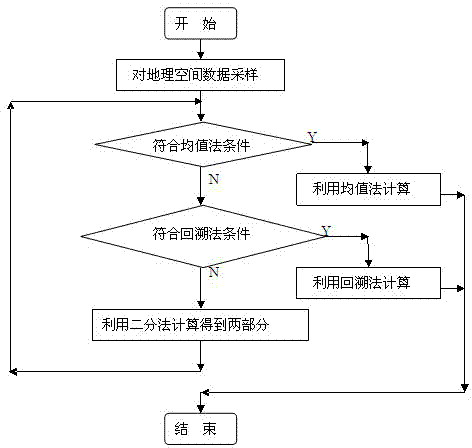Load balancing method for geospatial data on cloud computing platform
A geospatial data and cloud computing platform technology, applied in the field of cloud computing, can solve problems such as not considering the unevenness of data partitioning, and the decrease in operating efficiency of the mapreduce model
- Summary
- Abstract
- Description
- Claims
- Application Information
AI Technical Summary
Problems solved by technology
Method used
Image
Examples
Embodiment Construction
[0047] Below in conjunction with accompanying drawing, the technical scheme of invention is described in detail:
[0048] figure 1 It is the general flowchart of the load balancing method for geospatial data processing. This method considers the situation of geospatial data sampling data blocks, and comprehensively uses three algorithms (average method, backtracking method, and dichotomy method) to distribute geospatial data in a balanced manner. Process each mapping node. Specifically include the following steps:
[0049] Step 1. Divide the geospatial data into a set of data blocks whose number increases according to the spatial distribution law according to the Hilbert space filling curve. Let the total number of data blocks after division be According to the sampling interval Sampling is performed to obtain the number of sampled data blocks as N, let s and p represent the data volume sequence of the sampled data block and the final position sequence to be divided respe...
PUM
 Login to View More
Login to View More Abstract
Description
Claims
Application Information
 Login to View More
Login to View More - R&D
- Intellectual Property
- Life Sciences
- Materials
- Tech Scout
- Unparalleled Data Quality
- Higher Quality Content
- 60% Fewer Hallucinations
Browse by: Latest US Patents, China's latest patents, Technical Efficacy Thesaurus, Application Domain, Technology Topic, Popular Technical Reports.
© 2025 PatSnap. All rights reserved.Legal|Privacy policy|Modern Slavery Act Transparency Statement|Sitemap|About US| Contact US: help@patsnap.com



